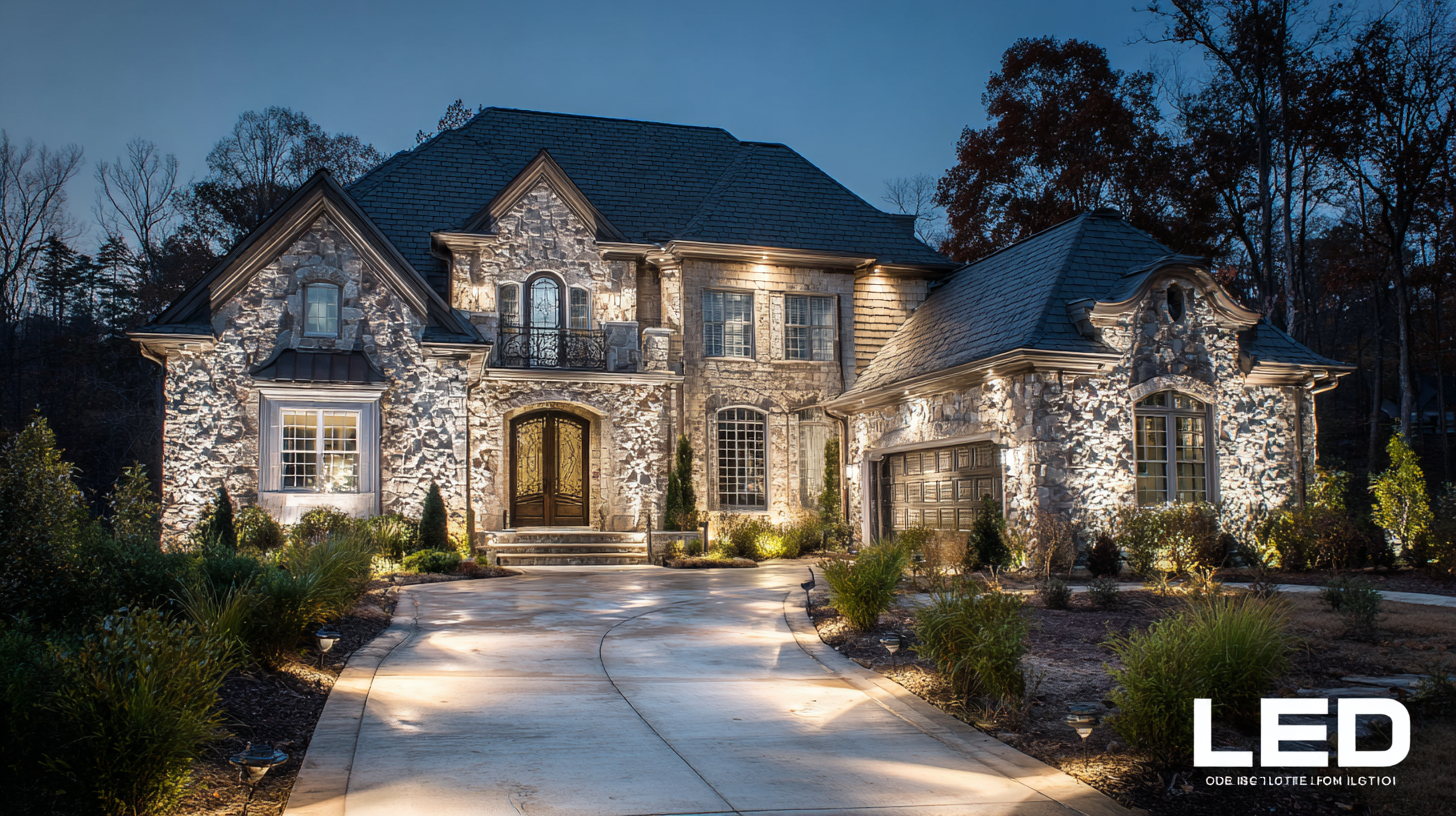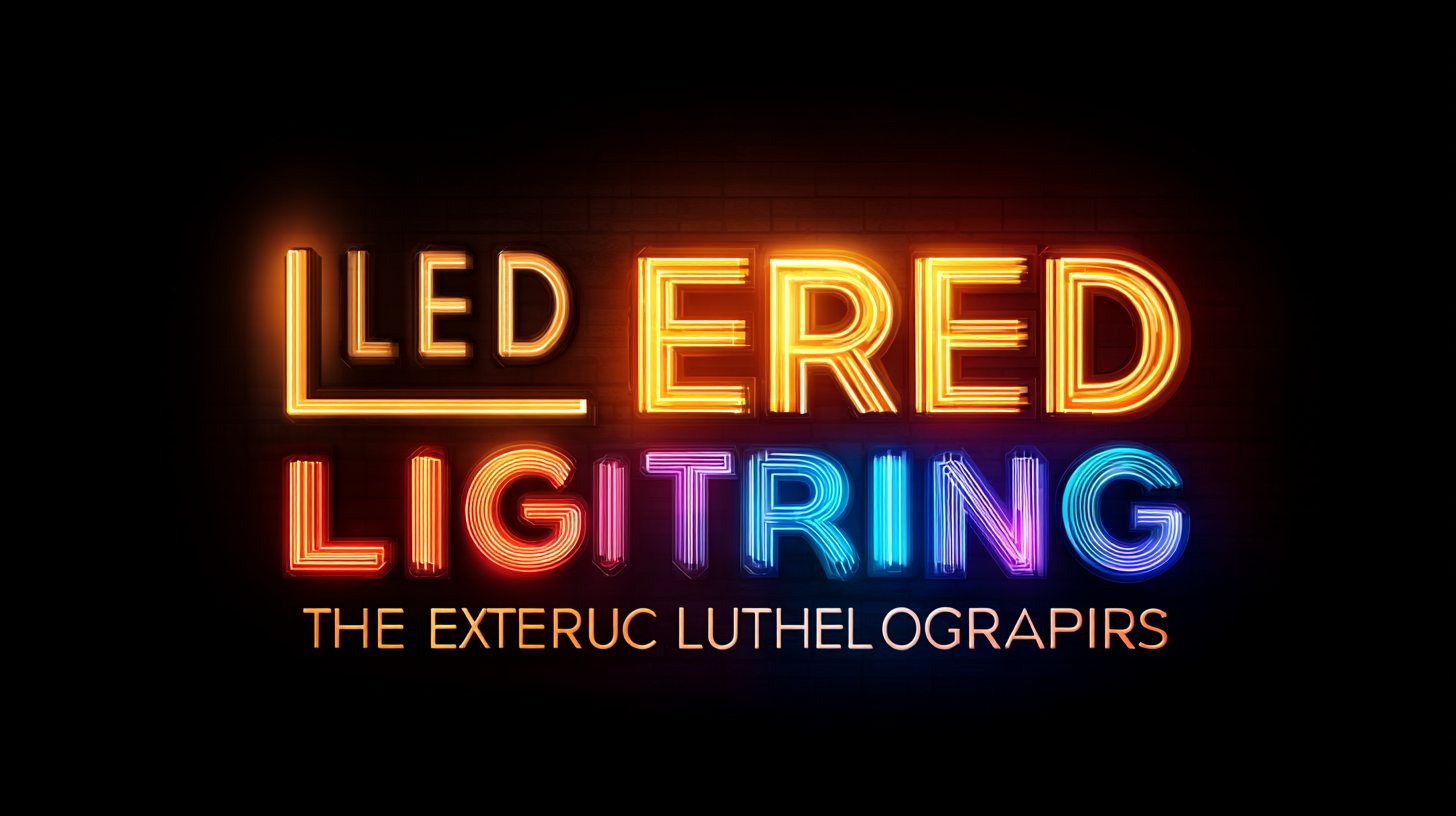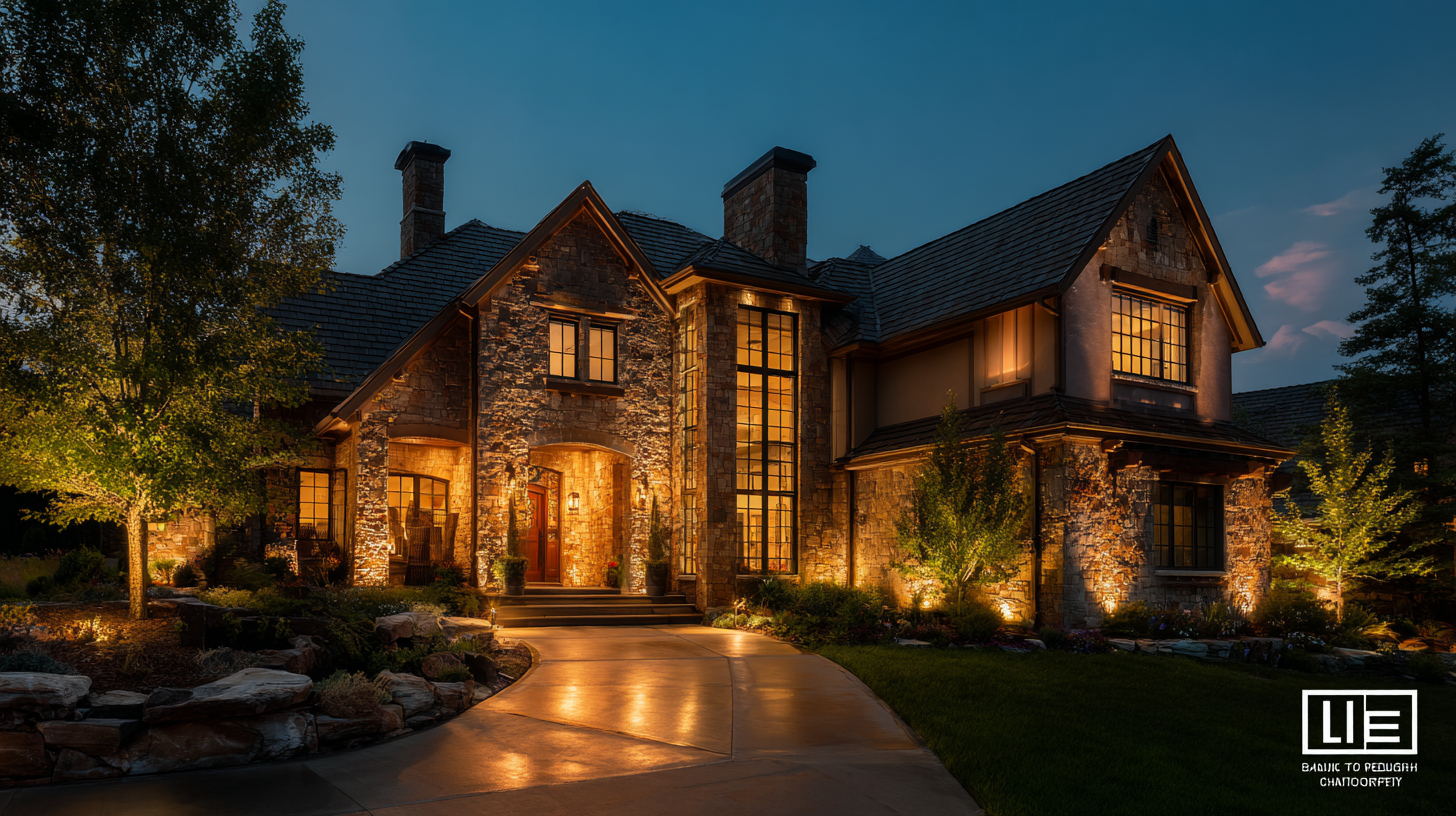The Ultimate Guide to Choosing the Best Led Exterior Lighting for Your Global Projects
In recent years, the adoption of LED exterior lighting has surged, driven by its energy efficiency and durability. According to a report by the U.S. Department of Energy, LED lighting has the potential to reduce energy consumption for outdoor lighting by up to 75%, significantly lowering operational costs while enhancing visibility and safety. Furthermore, the global market for LED lights is projected to reach $105 billion by 2027, highlighting the growing preference for LED technologies across various sectors.

As organizations undertake global projects, selecting the best LED exterior lighting becomes crucial not only for meeting sustainability goals but also for ensuring the adaptability and aesthetic appeal of their installations. This guide aims to provide comprehensive insights into the various types of LED exterior lighting available, helping project managers make informed decisions that align with both functionality and design.
Understanding Your Project's Unique Lighting Requirements
 When embarking on a global project, understanding your project's unique lighting requirements is crucial. Each location presents distinct environmental challenges and aesthetic considerations that influence the type of LED exterior lighting you choose. For example, in coastal areas, lighting fixtures must be resistant to corrosion and operate effectively in salty air, while urban settings may require energy-efficient solutions that enhance security and visibility without creating light pollution. Assessing the specific needs of your project will guide you toward selecting the right products that not only meet functional demands but also complement the surrounding architecture.
When embarking on a global project, understanding your project's unique lighting requirements is crucial. Each location presents distinct environmental challenges and aesthetic considerations that influence the type of LED exterior lighting you choose. For example, in coastal areas, lighting fixtures must be resistant to corrosion and operate effectively in salty air, while urban settings may require energy-efficient solutions that enhance security and visibility without creating light pollution. Assessing the specific needs of your project will guide you toward selecting the right products that not only meet functional demands but also complement the surrounding architecture.
Furthermore, consider the cultural context and intended use of the space. Different regions may have varying preferences for color temperature and brightness levels. For instance, warm white lighting is often preferred in residential areas to create a cozy atmosphere, whereas cooler, brighter lights may be more suitable for commercial applications to promote visibility and safety. Engage with local stakeholders to gain insights into their preferences, ensuring that your lighting choices resonate with the community while fulfilling your project's objectives. By prioritizing these unique requirements, you can create a lighting design that enhances your project’s overall success.
Evaluating Different Types of LED Exterior Lights for Global Use
When selecting LED exterior lighting for global projects, it's essential to evaluate the various types of LED lights available, as each serves distinct purposes and environmental needs. Flood lights, for instance, provide broad illumination, making them ideal for large outdoor areas such as parking lots and sports fields. Their high lumen output ensures safety and visibility, particularly during nighttime operations. Meanwhile, wall-mounted lights offer targeted lighting solutions, perfect for façades or entryways, enhancing both security and aesthetic appeal while conserving energy.
Another crucial consideration is the adaptability of LED lights to different climates and conditions. Some fixtures are designed with weather-resistant features, suitable for harsh environments—whether dealing with extreme heat, humidity, or cold temperatures. Additionally, solar-powered LED lights have become popular in remote locations, reducing dependency on traditional power sources and promoting sustainability. By carefully assessing these options, project managers can ensure that their lighting choices not only meet functional requirements but also align with global standards for durability and energy efficiency.
Key Factors in Selecting Energy-Efficient LED Lighting Solutions
When selecting energy-efficient LED lighting solutions for global projects, several key factors come into play that can significantly affect both performance and cost-effectiveness. One of the primary considerations is the scalability of the energy retrofit systems, which encompasses both quick-win renovations and deep retrofits. A robust analysis of market size and shares involves breaking down the components by types—such as LED lighting, HVAC, and building envelopes—as well as applications across residential, commercial, and institutional sectors. This systematic approach ensures that the chosen lighting solutions not only meet sustainability goals but also fit the operational needs of the specific environments.
In addition to energy efficiency, the emergency lighting market rising trends should not be overlooked. This sector is influenced by various factors, including the types of light sources—ranging from fluorescent to modern LEDs—and the battery technologies employed. The demand for reliable emergency lighting solutions is expected to increase as more industries prioritize safety and compliance. Furthermore, global shifts toward sustainable lighting technologies, like the projected growth in the LED packaging market, underscore the importance of integrating high-efficiency products into comprehensive lighting strategies. This commitment to energy-efficient practices is crucial for both environmental sustainability and economic viability in global projects.
The Ultimate Guide to Choosing Energy-Efficient LED Exterior Lighting
Tips for Ensuring Compliance with Local Lighting Regulations
When embarking on global projects that require
LED exterior lighting, complying with local lighting regulations is essential. Each region has its own specific standards aimed at
mitigating light pollution, ensuring energy efficiency, and safeguarding wildlife. To navigate these intricacies, it is crucial to familiarize yourself with the local codes
before making any lighting decisions. Researching jurisdiction-specific guidelines will help you determine permissible brightness levels, fixture types, and design aesthetics, allowing for a seamless integration of your
lighting solutions within the environment.
Engaging with local authorities and stakeholders can further enhance compliance efforts.
Collaboration can provide insights into community needs and concerns, ensuring that your project not only meets regulatory standards but also garners local support. Additionally, consider consulting with
lighting professionals who have experience in the region; they can offer valuable expertise on materials and technologies that align with both compliance requirements and innovative lighting design.
Prioritizing these practices will ensure your LED exterior lighting projects are both effective and
legally sound across diverse landscapes.
Best Practices for Installation and Maintenance of LED Exterior Lighting
When it comes to installing LED exterior lighting, adhering to best practices can enhance both performance and longevity of the fixtures. First and foremost, proper placement is critical. An effective lighting design considers both the aesthetic and functional aspects, ensuring that potential hazards are illuminated while also enhancing the property's visual appeal. To achieve this, it's advisable to conduct a thorough site assessment, identifying key areas that require lighting, such as walkways, entrances, and driveways. This proactive approach helps in minimizing dark spots and enhances overall safety.

Maintenance is another vital component of ensuring your LED exterior lighting system remains effective over time. Regular cleaning of the fixtures helps maintain their brightness, as dust and debris can diminish light output. Additionally, it is essential to regularly check for any signs of wear or damage, addressing issues promptly to prevent further deterioration. Establishing a routine maintenance schedule can help ensure that the lighting system operates efficiently, reducing the risk of unexpected outages and extending the life span of the components. By following these best practices, you can ensure your LED exterior lighting remains both functional and visually appealing for years to come.

